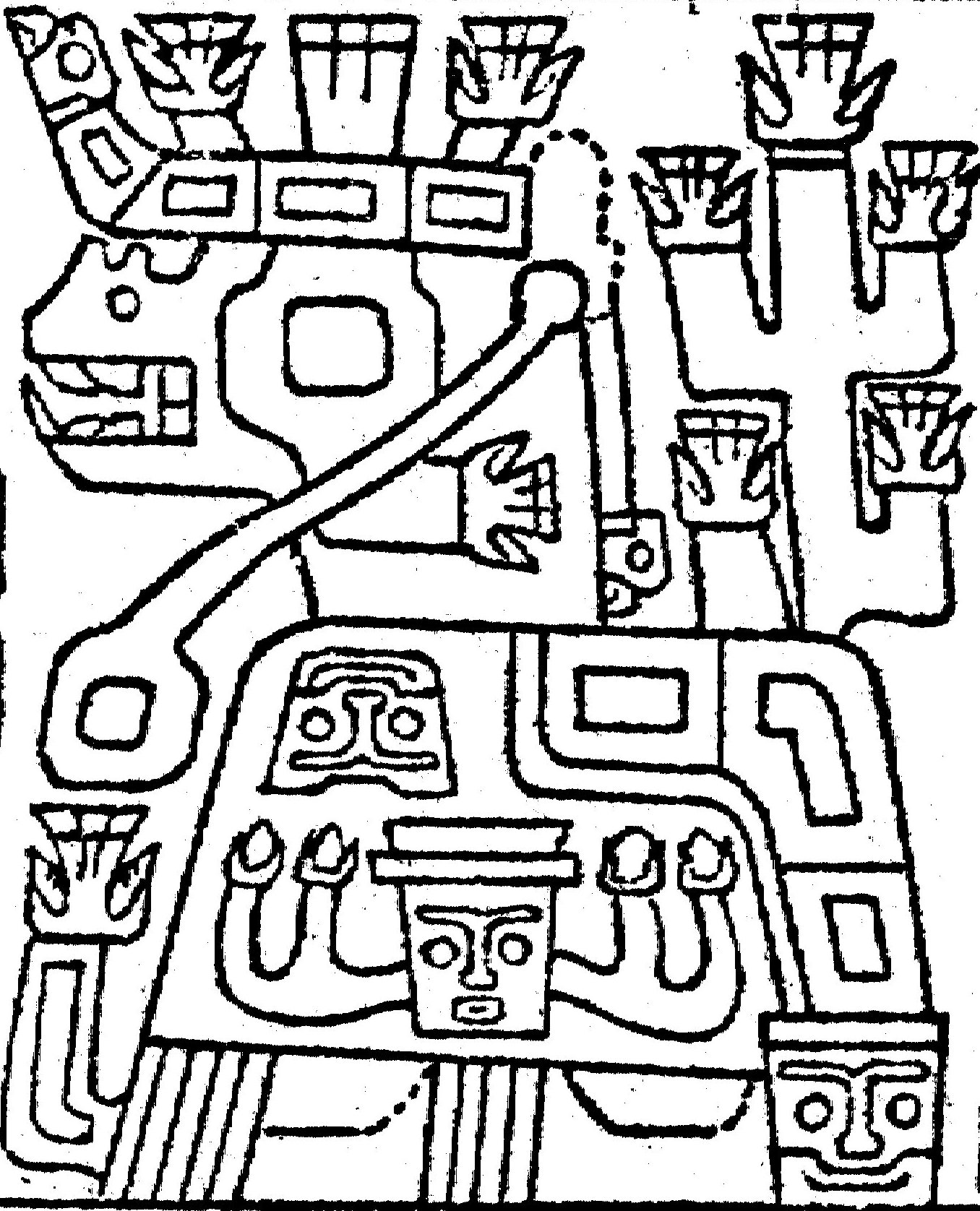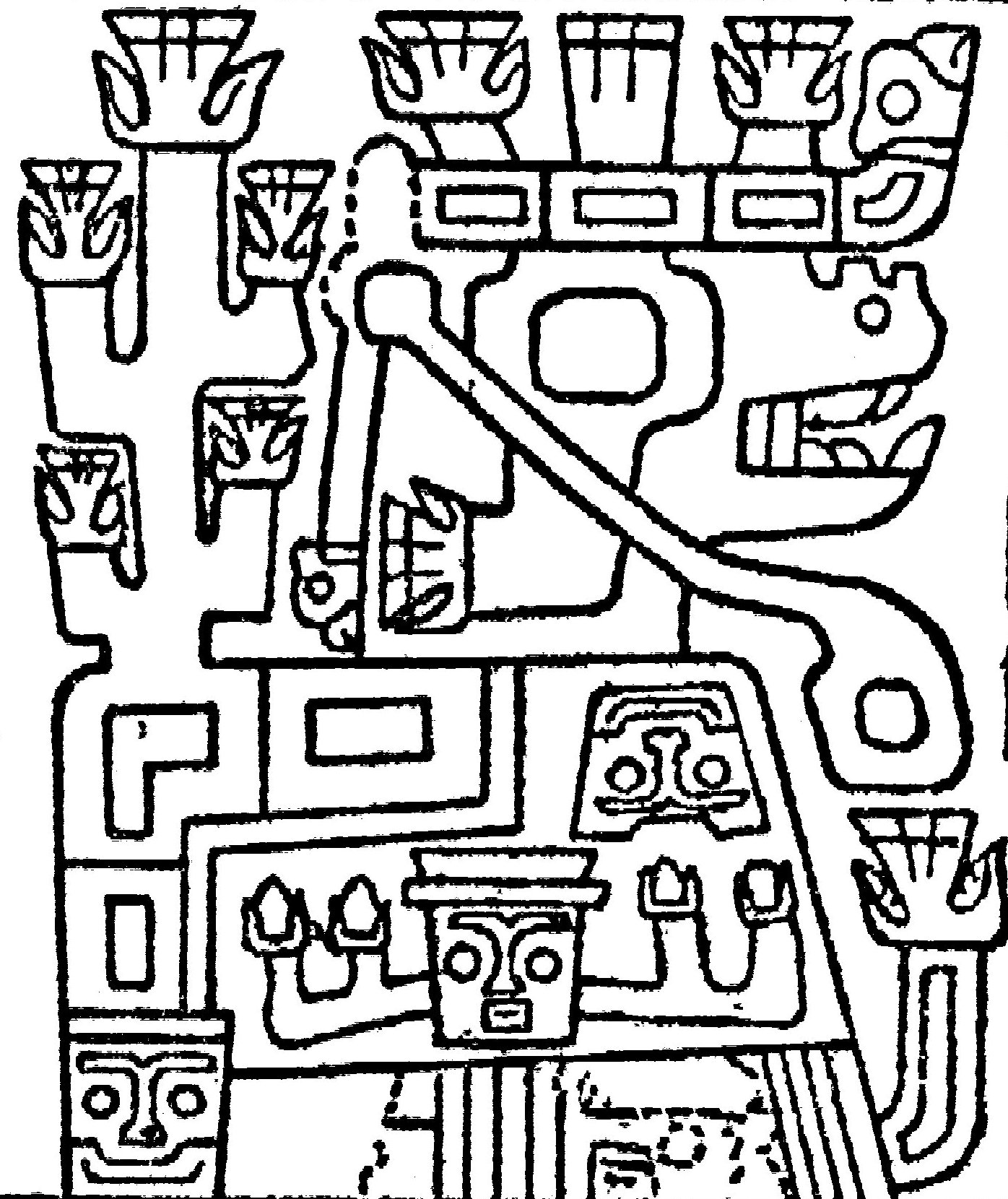On the back of Pachamama we find this strange figure:
We can note - if we look carefully - significant small differences between the left and the right versions, just as the observant can note minor differences between the glyphs of rongorongo. I suspect the 'real talk' is documented in this way, suggestions implanted 'in between the lines'. "Alcor is the naked-eye companion of Mizar, and, inconspicuous though it be, has been famous in astronomical folk-lore. This title, and that of the star ε, Alioth, may be from the same source, for Smyth wrote of it: They are wrong who pronounce the name to be an Arabian word importing sharp-sightedness; it is a supposed corruption of al-jaśn, a courser, incorrectly written al-jat, whence probably the Alioth of the Alfonsine Tables came in, and was assigned to ε Ursae Majoris, the 'thill-horse' of Charle's Wain. This little fellow was also familiarly termed Suha {the Forgotten, Lost, or Neglected One, because noticeable only by a sharp eye}, and implored to guard its viewers against scorpions and snakes, and was the theme of a world of wit in the shape of saws : but Miss Clerke says: The Arabs in the desert regarded it as a test of penetrating vision; and they were accustomed to oppose 'Suhel' to 'Suha' (Canopus to Alcor) as occupying respectively the highest and lowest posts in the celestial hierarchy. So that Vidit Alcor, at non lunam plenum, came to be a proverbial description of one keenly alive to trifles, but dull of apprehension for broad facts." (Allen) Posnansky tells us: "To the left and right ... there is a strange figure which we have not seen before in the symbolic writing of Tihuanacu and which in our opinion is the symbolic depiction of a 'Humanized Wari-Willka' to judge by the strange head, which has the typical teeth of the Cameloidea, perfectly drawn. Its crown consists of three 'Wings' and in front it has a 'Condor Head'. From its neck there hangs in a muzzle a 'Star' sign. The 'Wing' is composed of four 'Small Wings' and a 'Puma Head' which stretches downward. The front foot of the animal ends in a 'Wing'. On the back foot one sees the head of a 'Wari-Willka' which has two small 'Wings' on each side. On the chest of the animal there is a 'Puma Head' looking up. These are the details of this strange and complicated figure." I think we should equate 'Wing' with flame, cfr e.g. at the top (= Midsummer?) of the September Sun (on the Sun Door) and that 'this strange and complicated' figure must therefore represent 'fire' in some way. Furthermore, I think she looks like a hippopotamus. |

